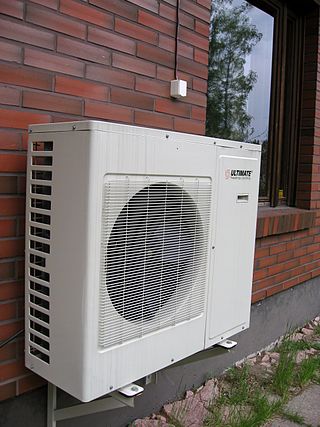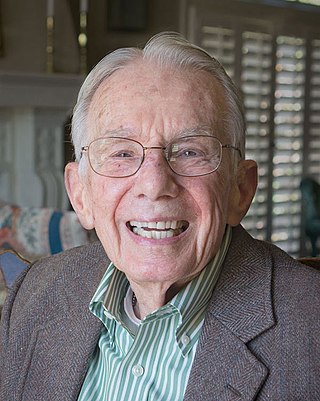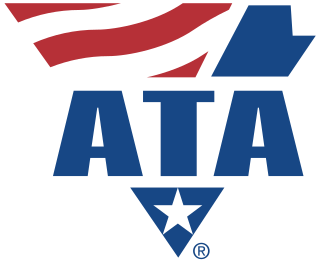
Energy conservation is the effort to reduce wasteful energy consumption by using fewer energy services. This can be done by using energy more effectively or changing one's behavior to use less and better source of service. Energy conservation can be achieved through efficient energy use, which has some advantages, including a reduction in greenhouse gas emissions and a smaller carbon footprint, as well as cost, water, and energy savings.

The Energy Policy Act of 1992, effective October 24, 1992, is a United States government act. It was passed by Congress and set goals, created mandates, and amended utility laws to increase clean energy use and improve overall energy efficiency in the United States. The Act consists of twenty-seven titles detailing various measures designed to lessen the nation's dependence on imported energy, provide incentives for clean and renewable energy, and promote energy conservation in buildings.

Negawatt power is investment to reduce electricity consumption rather than investing to increase supply capacity. In this way, investing in negawatts can be considered as an alternative to a new power station and the costs and environmental concerns can be compared.

Arthur Hinton Rosenfeld was a University of California, Berkeley physicist and California energy commissioner, dubbed the "Godfather of Energy Efficiency", for developing new standards which helped improve energy efficiency in California and subsequently worldwide.

The Alliance to Save Energy is a bipartisan, nonprofit coalition of business, government, environmental, and consumer groups based in Washington, D.C. The Alliance states that it advocates for "energy-efficiency policies that minimize costs to society and individual consumers, and that lessen greenhouse gas emissions and their impact on the global climate." The Alliance's chief activities include public relations, research, and lobbying to change U.S. energy policy.

The Energy Independence and Security Act of 2007, originally named the Clean Energy Act of 2007, is an Act of Congress concerning the energy policy of the United States. As part of the Democratic Party's 100-Hour Plan during the 110th Congress, it was introduced in the United States House of Representatives by Representative Nick Rahall of West Virginia, along with 198 cosponsors. Even though Rahall was 1 of only 4 Democrats to oppose the final bill, it passed in the House without amendment in January 2007. When the Act was introduced in the Senate in June 2007, it was combined with Senate Bill S. 1419: Renewable Fuels, Consumer Protection, and Energy Efficiency Act of 2007. This amended version passed the Senate on June 21, 2007. After further amendments and negotiation between the House and Senate, a revised bill passed both houses on December 18, 2007 and President Bush, a Republican, signed it into law on December 19, 2007, in response to his "Twenty in Ten" challenge to reduce gasoline consumption by 20% in 10 years.

Efficient energy use, or energy efficiency, is the process of reducing the amount of energy required to provide products and services. There are many technologies and methods available that are more energy efficient than conventional systems. For example, insulating a building allows it to use less heating and cooling energy while still maintaining a comfortable temperature. Another method is to remove energy subsidies that promote high energy consumption and inefficient energy use. Improved energy efficiency in buildings, industrial processes and transportation could reduce the world's energy needs in 2050 by one third.
The American Solar Energy Society (ASES) is a non-profit 501(c)(3) organization advocating for renewable energy in the United States. Founded in 1954, ASES' goal is to speed the transition toward a sustainable energy economy and 100% renewable energy. The non-profit advocates for sustainable living and renewable energy issues in education, research, and policy.
The Environmental and Energy Study Institute(EESI) is an independent, bi-partisan 501(c)(3) non-profit organization that aims to promote environmentally sustainable societies. Based out of Washington, DC, EESI seeks to be a catalyst moving society away from environmentally damaging fossil fuels and toward a clean energy future. The organization was established in 1984 by a bipartisan and bicameral group of members of the United States Congress who were concerned with global environmental and energy problems.

The American Trucking Associations (ATA), founded in 1933, is the largest national trade association for the trucking industry. ATA represents more than 37,000 members covering every type of motor carrier in the United States through a federation of other trucking groups, industry-related conferences, and its 50 affiliated state trucking associations. Former Governor of Kansas Bill Graves was replaced by Chris Spear as the ATA's president and CEO in July 2016.

The United States is the second-largest single consumer of energy in the world. The U.S. Department of Energy categorizes national energy use in four broad sectors: transportation, residential, commercial, and industrial. Energy usage in transportation and residential sectors is largely controlled by individual domestic consumers. Commercial and industrial energy expenditures are determined by businesses entities and other facility managers. National energy policy has a significant effect on energy usage across all four sectors.

The Bureau of Energy Efficiency is an agency of the Government of India, under the Ministry of Power, created in March 2002 under the provisions of the nation's 2001 Energy Conservation Act. The agency's function is to encourage the efficient use of energy in India by developing programs to support it. For example, the government proposed to make it mandatory for certain appliances in India to have ratings by the BEE from January 2010 onwards. The mission of the Bureau of Energy Efficiency is to institutionalise energy efficiency services, enable delivery mechanisms in the country and provide leadership to energy efficiency in all sectors of the country. Its primary objective is to reduce energy intensity in the economy.
The Building Codes Assistance Project (BCAP) is a non-profit organization that advocates for the adoption, implementation, and advancement of building energy codes. It was established in 1994 as a joint initiative of the Alliance to Save Energy (ASE), the American Council for an Energy-Efficient Economy (ACEEE), and the Natural Resources Defense Council (NRDC). BCAP supports energy codes as a means to save money on energy bills, reduce energy consumption, lower greenhouse gas emissions, ensure occupant health and safety, create green jobs, and reduce the long-term impacts of the built environment.

The energy policy of the Obama administration was defined by an "all-of-the-above" approach which offered federal support for renewable energy deployment, increased domestic oil and gas extraction, and export of crude oil and natural gas. His presidency's first term was shaped by the failure of his signature climate legislation, the American Clean Energy and Security Act, to pass, and then climate and energy disasters including the Deepwater Horizon oil spill in 2010 and then Hurricane Sandy, which took place during the 2012 election. In his second term, Obama lifted the ban on crude oil exports and approved liquified natural gas exports; his planned regulatory approach to reducing greenhouse pollution in the electricity sector, the Clean Power Plan, was blocked by the U.S. Supreme Court.
A Deep Energy Retrofit is an energy conservation project in an existing building that leads to an overall improvement in building performance. While there is no exact definition for a deep energy retrofit, it can be characterized as a whole-building analysis and construction process that aims to reduce on-site energy use by 50% or more using existing technologies, materials and construction practices. Reductions are calculated against baseline energy use using data from utility bills. Such a retrofit reaps multifold benefits beyond energy cost savings, unlike conventional energy retrofit. It may also involve remodeling the building to achieve a harmony in energy, indoor air quality, durability, and thermal comfort. An integrated project delivery method is recommended for a deep energy retrofit project. An over-time approach in a deep energy retrofitting project provides a solution to the large upfront costs problem in all-at-once execution of the project.
Market transformation describes both a policy objective and a program strategy to promote the value and self-sustaining presence of energy-efficient technologies in the marketplace. It is a strategic process of market intervention which aims to alter market behavior by removing identified barriers and leveraging opportunities to further the internalization of cost-effective energy efficiency as a matter of standard practice. Market transformation has rapidly become the objective of many privately and publicly supported energy efficiency programs in the United States and other countries.

CLASP is an international nonprofit organization which provides technical and policy support to governments worldwide and works to implement energy efficiency standards and labels (S&L) for appliances, lighting, and equipment. It specializes in publishing studies and analyses with relevance to S&L practitioners.
John A. "Skip" Laitner is an American-born economist, author and lecturer. He focuses on developing a more robust technology and behavioral characterization of energy efficiency resources for use in energy and climate economic policy models.
The Energy Conservation Program for Consumer Products Other Than Automobiles is a regulatory program that enforces minimum energy conservation standards for appliances and equipment in the United States. The program was established under Part B of Title III of the Energy Policy and Conservation Act of 1975 and gives the Department of Energy (DOE) the authority to develop and implement test procedures and minimum standards for more than 60 products covering residential, commercial and industrial, lighting, and plumbing applications. The Department of Energy is required to set standards that are "technologically feasible and economically justified."

The EPS Service Parts Act of 2014 is a bill that would exempt certain external power supplies from complying with standards set forth in a final rule published by the United States Department of Energy in February 2014. The United States House Committee on Energy and Commerce describes the bill as a bill that "provides regulatory relief by making a simple technical correction to the 2007 Energy Independence and Security Act to exempt certain power supply (EPS) service and spare parts from federal efficiency standards."











